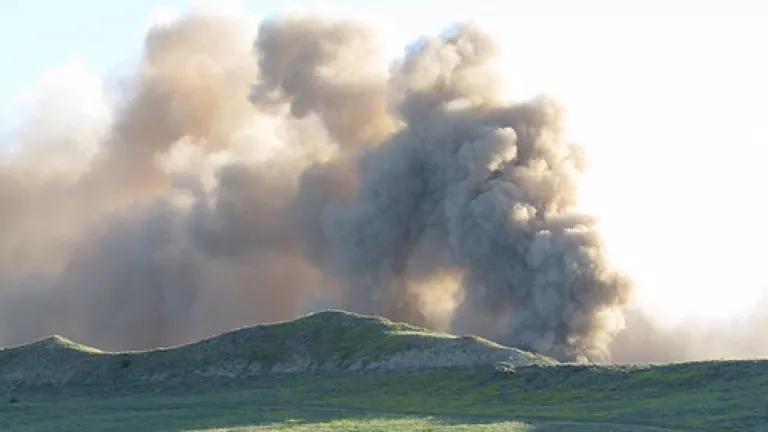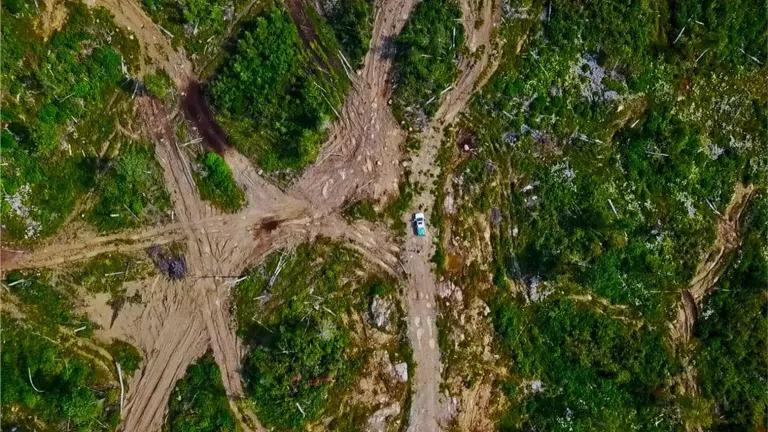TransCanada's record presents a strong case for rejecting Keystone XL tar sands pipeline (again)

TransCanada's Bison Pipeline Explosion, July 20, 2011
Canadian pipeline regulators have announced a sweeping audit of TransCanada’s Canadian operations after confirming the account of a whistleblower documenting repeated violations of pipeline safety regulations by the company. This is the latest in a long series of accidents, shutdowns and pipeline safety infractions that have hounded the Canadian pipeline operator TransCanada, the sponsor of the embattled Keystone XL tar sands pipeline. Earlier this month, TransCanada was forced to shut its leak prone Keystone I tar sands pipeline down for four days after finding an “anomaly” – a technical term for cracks, corrosion or other defects in a pipeline which may lead to a rupture. Meanwhile, an investigative report revealed that TransCanada was aware of significant quality problems with it new Bison pipeline months before it exploded. Investigations by pipeline regulators and a succession of TransCanada whistleblowers paint a picture of a company that cuts corners compromising the safety of its pipelines, ignores its own quality control inspectors, and regards the minimum legal bar established by safety regulations as optional guidelines. The Keystone XL tar sands pipeline raises a variety of complex and significant issues, including the environmental impact of tar sands development, the risks associated with transporting it and the greater impact of tar sands spills. However TransCanada’s performance over the last few years introduces a much simpler question – should we trust this company to build and operate any kind of pipeline, anywhere?
Let’s take a look at the record.
Keystone I, a pipeline moving primarily tar sands from Alberta to the Midwest and Oklahoma, was TransCanada’s first crude oil pipeline. TransCanada pitched it as a state-of-the-art pipeline which would “meet or exceed world-class safety and environmental standards.” In its environmental risks assessment, the company forecast that Keystone I would leak no more than 1.4 times a decade and noted that it had agreed to 51 special conditions that would increase its safety.
When construction on the project began in 2008, reality began to sharply diverge from TransCanada’s rhetoric. As the Keystone I was being built, a pipeline inspector working for a TransCanada contractor, was alarmed by what he saw – cheap steel prone to cracking, bad welds, sloppy concrete jobs, poorly spaced rebar, and fudged pressure testing. When he reported these issues to TransCanada, he was ignored and ultimately fired.
Keystone I started having problems as soon as it commenced operations in 2010. In its first year, the pipeline leaked 14 times, with the largest spill exceeding 21,000 gallons. Federal pipeline regulators were forced to intervene, issuing a Corrective Action Order (CAO) temporarily shutting the pipeline down as an imminent threat to life, safety and the environment. Keystone I became the newest pipeline in U.S. history to receive such an order – the previous contender was a 25 year old pipeline.
After finishing Keystone I pipeline, TransCanada started a construction on its Bison natural gas pipeline in August 2010. However, soon after commencing the project, the company ran into troubles. In an internal memo in September 2010, the pipelines’ construction manager listed problems relating to welding and inspection, concluding “we are in trouble with the Bison project.”
Federal pipeline regulators inspecting the Bison project took issue with the quality-assurance of inspections, the qualifications of people working on the pipeline and the procedures used to test the coating on the pipe.
While aware of these issues, TransCanada touted the extra safety measures it was taking for its “state-of-the-art” Bison natural gas pipeline, claiming that the pipeline “will be in place for 20 or 30 years before they need any repairs.” Two months after TransCanada avowed the safety of its Bison pipeline, it exploded, destroying a sixty foot section with a shock wave that could be heard thirty miles away.
Evan Vokes, a TransCanada metallurgical engineer sent to sort out the problems with the Bison project, found examples of shoddy welding and poorly trained inspectors who were not identifying all of the welding problems. Moreover, he came to find similar shoddy practices through TransCanada’s operations. In response to his concerns, his supervisors sent him what he describes as “increasingly pressured emails about how things were OK to do it that way.”
At the invitation of Russ Girling, TransCanada's CEO, Vokes provided documents to senior executives of the company that documented systemic failure to follow code and regulations in 2011. However, in the face of inaction by management and after determining that TransCanada was consistently placing budget and schedule considerations ahead of quality, he raised his concerns with Canadian pipeline regulators at the NEB. After an initial investigation, investigators corroborated many of Vokes’ claims and have launched a sweeping audit of TransCanada’s operations. NEB regulators cited concern with TransCanada’s non-compliance with NEB regulations and what may be an erosion of the safety culture at the company.
It is a recognition that there was something really wrong with TransCanada. Because in my letter to Russ Girling, I told him that [TransCanada’s] business plan doesn’t match the NEB regulations. Evan Vokes, Former TransCanada Metallurgist
Mr. Vokes actions have been laudable and NEB’s decision to investigate them should be applauded. Unfortunately, no such action has been taken in the United States in response to Mike Klink’s allegations. TransCanada initial argument that Kink was only one of many inspectors to allege safety shortcuts seems particularly feeble now that 1) Evan Vokes has made similar claims which have been corroborated by the NEB; 2) U.S pipeline regulators have already taken issue with the lack of quality-assurance inspections on TransCanada’s pipelines and 3) in the NEB’s investigation, TransCanada has publicly admitted it has pressured inspectors to sign off on work off to code.
The time has come for U.S. pipeline regulators to do their own due diligence into questions of TransCanada’s safety practices. Moreover, as the next administration considers TransCanada’s proposal to build Keystone XL, a 830,000 barrel per day tar sands pipeline across the Ogallala aquifer, it needs to consider whether TransCanada should be allowed to build any pipeline anywhere.
I pray about every night, that the Keystone [XL], that they don’t let them come through. I don’t want the Keystone line after the Bison one." Cody Johnson, Montana Rancher, October 24, 2012.




